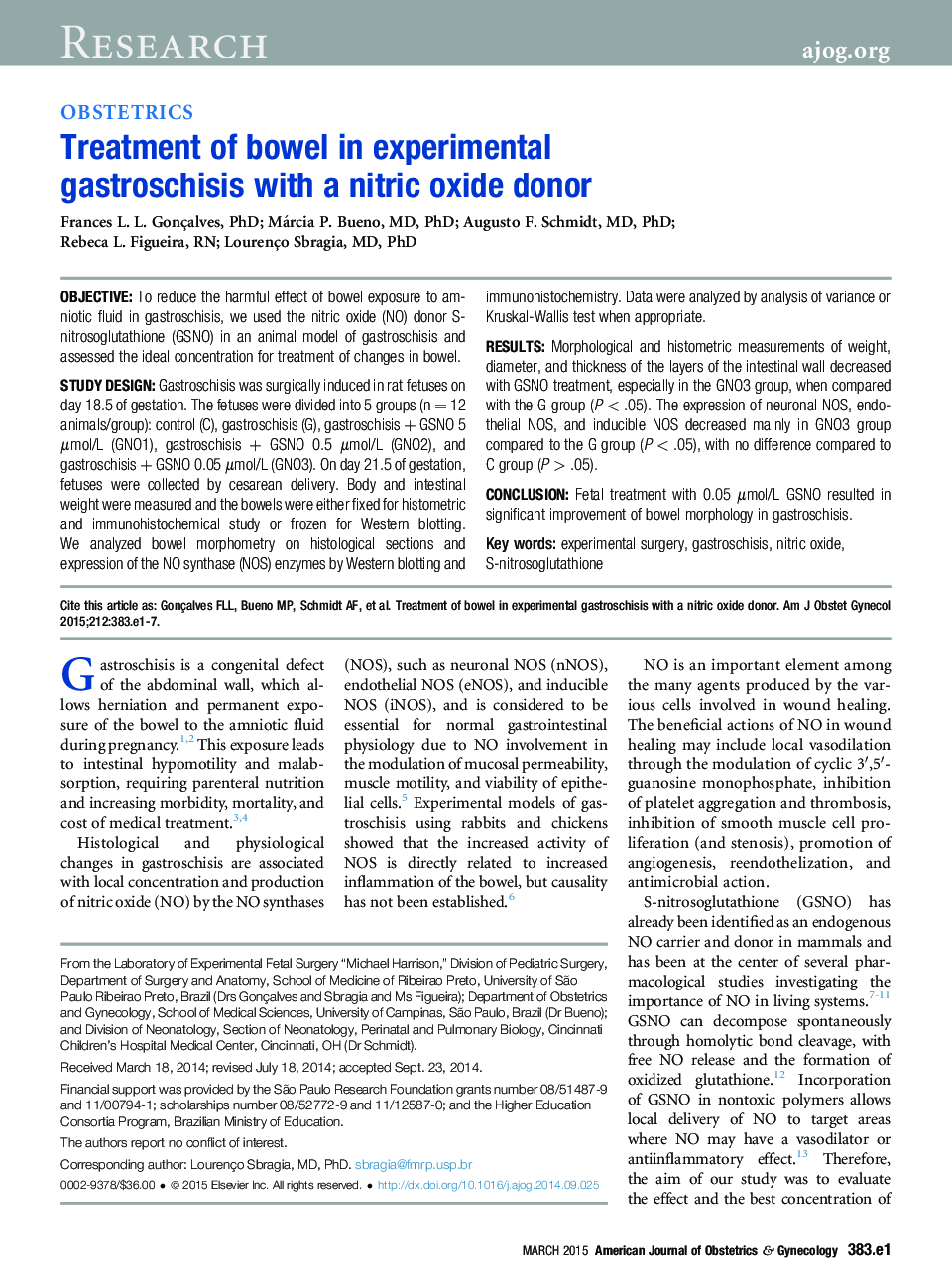| Article ID | Journal | Published Year | Pages | File Type |
|---|---|---|---|---|
| 6144387 | American Journal of Obstetrics and Gynecology | 2015 | 7 Pages |
ObjectiveTo reduce the harmful effect of bowel exposure to amniotic fluid in gastroschisis, we used the nitric oxide (NO) donor S-nitrosoglutathione (GSNO) in an animal model of gastroschisis and assessed the ideal concentration for treatment of changes in bowel.Study DesignGastroschisis was surgically induced in rat fetuses on day 18.5 of gestation. The fetuses were divided into 5 groups (n = 12 animals/group): control (C), gastroschisis (G), gastroschisis + GSNO 5 μmol/L (GNO1), gastroschisis + GSNO 0.5 μmol/L (GNO2), and gastroschisis + GSNO 0.05 μmol/L (GNO3). On day 21.5 of gestation, fetuses were collected by cesarean delivery. Body and intestinal weight were measured and the bowels were either fixed for histometric and immunohistochemical study or frozen for Western blotting. We analyzed bowel morphometry on histological sections and expression of the NO synthase (NOS) enzymes by Western blotting and immunohistochemistry. Data were analyzed by analysis of variance or Kruskal-Wallis test when appropriate.ResultsMorphological and histometric measurements of weight, diameter, and thickness of the layers of the intestinal wall decreased with GSNO treatment, especially in the GNO3 group, when compared with the G group (P < .05). The expression of neuronal NOS, endothelial NOS, and inducible NOS decreased mainly in GNO3 group compared to the G group (P < .05), with no difference compared to C group (P > .05).ConclusionFetal treatment with 0.05 μmol/L GSNO resulted in significant improvement of bowel morphology in gastroschisis.
